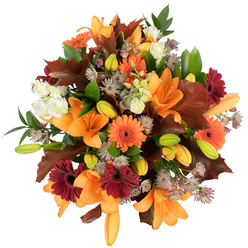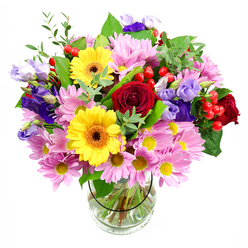Funeral Flowers Coulsdon CR5

Funeral Flowers: An in-depth Guide
Introduction
Funerals are somber occasions marked by a mix of grief and remembrance. Flowers play an integral part in expressing condolences and honoring the departed. While many people associate flowers with celebrations like birthdays and weddings, the tradition of funeral flowers is equally significant. In this article, we will explore the history, types, meanings, and etiquette surrounding funeral flowers, providing a comprehensive guide to help you make thoughtful choices during difficult times.
History of Funeral Flowers
The use of flowers in funerals dates back to ancient civilizations. Archaeological discoveries reveal that Neanderthals used flowers in burials around 60,000 BCE. Ancient Egyptians, Greeks, and Romans all included floral arrangements in funeral rites, believing they helped to placate gods and guide the departed to the afterlife.
As Christianity spread, flowers took on new meanings in funeral customs. White lilies, symbolizing the purity of the soul, became particularly associated with Christian funerals. Over centuries, the tradition evolved, and today flowers remain a universal element of funerals across various cultures and religions.
Types of Funeral Flowers
Different types of funeral flowers serve various purposes, from adorning caskets to offering personal tributes. Here is a list of some common types:
Casket Sprays
Casket sprays cover the top of the casket. They are often chosen by close family members and tend to be the most elaborate arrangements.
Standing Sprays
Standing sprays are large floral arrangements placed on easels, typically near the casket or gravesite. They are highly visible and often feature a mix of flowers and colors.
Wreaths
Funeral wreaths are circular arrangements that symbolize eternity. They can be displayed on stands or placed directly on the gravesite.
Bouquets and Posies
Smaller and more personal, bouquets and posies can be placed directly in the grave or at the memorial site. They are often sent by more distant relatives and friends.
Heart and Cross Arrangements
These arrangements carry a religious significance and are often chosen by close family members to express their deep love and faith.
Popular Flowers and Their Meanings
Each flower carries a unique meaning, which can add a layer of thoughtfulness to your condolences.
Lilies
The lily is perhaps the most commonly associated flower with funerals, signifying the restored innocence of the soul after death.
Roses
Roses come in different colors, each bearing different meanings. White roses symbolize innocence and purity, red roses convey love and grief, while yellow roses represent strong ties and friendship.
Chrysanthemums
In many cultures, chrysanthemums are explicitly linked to funerals and memorials. They symbolize death and rebirth.
Carnations
Carnations are often used in funeral wreaths and sprays. White carnations mean pure love, red signifies admiration, and pink conveys remembrance.
Orchids
Orchids symbolize eternal love and are a touching choice for expressing sympathy.
Choosing the Right Flowers
Selecting the right funeral flowers involves a blend of cultural customs, personal preferences, and the relationship with the deceased. Below are some tips:
Consider the Deceased's Preferences
If you know the deceased's favorite flower or color, incorporating it into the arrangement can make it more personal.
Respect Cultural Traditions
Different cultures have different preferences and taboos concerning funeral flowers. For example, in some Asian cultures, white flowers are preferred for funerals, while red flowers may be considered inappropriate.
Coordinate with the Family
Communicate with close family members to ensure your choice complements other arrangements and respects any specific wishes or customs they may have.
Funeral Flower Etiquette
Adhering to funeral flower etiquette shows respect and sensitivity during a time of grief. Here are some guidelines:
When to Send Flowers
Timing is crucial. It's customary to send flowers either to the funeral home before the service or to the family's home after the funeral.
What to Include on the Card
Write a brief, heartfelt message. Avoid clich?s and focus on expressing your condolences and support. If sending flowers to a religious service, you can include a relevant scripture or quote.
Avoid Overly Bright Colors
Bright, festive colors may seem inappropriate for a funeral. Stick to more subdued hues to convey a respectful tone.
Respect Family Wishes
If the family requests donations to a charity in lieu of flowers, be sure to honor their request.
Alternative Options
While flowers are a traditional choice, there are other ways to express your condolences:
Memorial Trees
Some companies offer the planting of a tree in memory of the deceased, providing a lasting legacy.
Charitable Donations
If the family prefers donations to a charity, this can be a meaningful way to honor the deceased.
Personalized Keepsakes
Items like engraved stones or custom photo albums can serve as cherished memories for the family.
Conclusion
Funeral flowers serve as a heartfelt tribute to the deceased and provide comfort to grieving families. Whether you choose a traditional casket spray, a symbolic wreath, or a simple bouquet, understanding the history, types, meanings, and etiquette of funeral flowers can help you express your condolences in the most respectful and thoughtful way. Use this guide to navigate your choices, respecting both the cultural traditions and personal wishes of the bereaved. In doing so, you will offer a touching commemoration of a life well-lived.
Additional Resources
For more information on how to choose and send the perfect funeral flowers, visit our website. We offer a range of options tailored to your needs and are here to help you every step of the way.













